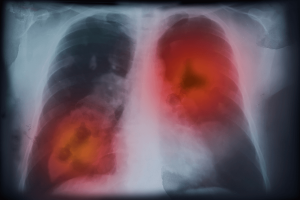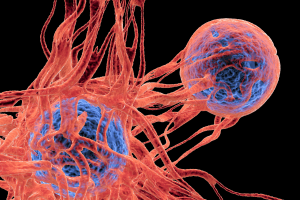
Radical prostatectomy (RP) is an effective curative treatment for men with non-metastatic prostate cancer. However, patients at higher risk frequently require adjuvant radiation therapy (ART). There is also considerable variation across guidelines regarding who should receive ART. The American Urological Association (AUA) and National Comprehensive Cancer Network (NCCN) guidelines suggest a tempered approach. At the same time, the European Association of Urology (EAU) advocates ART for a patient with adverse pathological features such as non-organ-confined disease (pT3), Gleason Grade Group (GG) 4-5, positive surgical margins, or pathological lymph node involvement (pN1). Additionally, patients with pathological lymph node involvement (pN1) are considered suitable for adjuvant radiation therapy. The ability to identify these patients preoperatively could assist in counseling and potentially limit decision regret. This study aimed to develop a multivariable predictive model using preoperative characteristics to determine the likelihood of requiring ART based on EAU criteria.
This retrospective study analyzed data from 5691 men with D’Amico high-risk prostate cancer who underwent RP at the Martini-Klinik (Hamburg, Germany) between January 2010 and August 2024. Patients with metastatic disease, neoadjuvant systemic therapy, or radiation therapy were excluded. Patient characteristics and demographic variables included age, preoperative prostate-specific antigen (PSA) values, tumor stage, biopsy Gleason Grade Group, prostate volume, and characteristics of the biopsy. The primary endpoint of this study was ART indication according to EAU 2025 guidelines. Univariable and multivariable logistic regression analyses were performed. Harrell’s concordance index (c-index) was used to quantify the model accuracy with 2,000 bootstrap resamples, and a nomogram was created for clinical application.
Among 5691 patients, 2,137 (38%) met the EAU criteria for ART. The median age was 66 years, the median BMI was 26.5 kg/m², the median prostate volume was 32 cm³, and the median PSA was 10.2 ng/ml. Most had cT2 disease (69%), biopsy Gleason GG 4 (50%), and ≤12 biopsy cores were sampled (77%). Pathology examination revealed non-organ-confined tumors in 65% of patients, lymph nodes positivity in 28%, and positive surgical margins in 35%.
In the univariable analysis, significant predictors of ART indication were identified, including prostate volume (prostate volume > 45 cm³ OR 2.16; prostate volume 25–45 cm³ OR 1.69), PSA (PSA > 20 ng/ml OR 1.62; PSA 10-20 ng/ml OR 2.04), clinical stage (cT3/4 OR 5.85; cT2 OR 2.33), number of biopsy cores (number of biopsy cores ≤ 12 OR 0.62), proportion of positive biopsy cores (OR 1.026 per %), and Gleason GG (Gleason GG ISUP 5 OR 7.50; Gleason GG ISUP 3-4 OR 2.39-4.36).
In multivariable analysis, all six variables were independently predictive, with Gleason GG 5 showing the strongest effect (OR 9.50, 95% CI 6.34-14.53). The final multivariable model demonstrated good discrimination with a c-index of 0.761 (95% CI 0.749-0.776).
This study demonstrates that preoperative clinical and tumor characteristics can accurately predict ART indication, with approximately 38% of high-risk patients requiring ART per EAU criteria. This aligns with retrospective evidence but contrasts with low real-world ART utilization rates (~3%). Randomized trials such as RADICALS-RT, RAVES, and GETUG-AFU 17 showed no survival benefit of adjuvant compared to early salvage radiotherapy, the basis of cautious NCCN/AUA guidance. But these trials underrepresented patients with very adverse features for whom retrospective data suggest a survival benefit from ART.
This current model highlights the predictive value of prostate volume, PSA, clinical stage, biopsy characteristics, and Gleason GG, achieving accuracy above the clinical significance threshold (c-index >0.761). Incorporating this tool into preoperative counselling may help patients anticipate ART needs, reduce decisional regret, and support multidisciplinary treatment planning.
References: Siech C, von Kriegstein H, Wenzel M, et al. Predicting the indication for adjuvant radiation therapy according to EAU guidelines among patients with high-risk prostate cancer: a novel multivariable model. Prostate Cancer Prostatic Dis. 2025. doi:10.1038/s41391-025-01018-y













